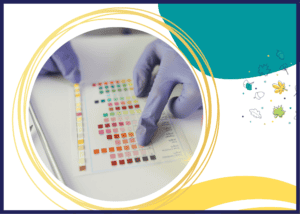Developing Emotion Regulation: Understanding Mental Health in Children
Overall well-being is dependent upon good mental health which starts in the early years. The most formative years of life involve understanding the impact that social and emotional development have on the ways in which we engage and interact with the world around us. During the early years of life, children are rapidly developing physically, emotionally, and cognitively. As parents and caregivers, it is important to understand the significance of attachment and attunement, co-regulation, and the role of neuroscience in supporting children’s mental health. In this blog post, we will delve into these key concepts and explore practical strategies to foster positive mental health focusing on children aged 0-6 years.
Attachment and Attunement
Attachment and attunement refer to the emotional connection and responsiveness that develops between a child and their primary caregiver. This bond plays a vital role in shaping a child’s sense of security, trust, and emotional regulation. Ideally, we want this bond to be a secure one and luckily, we can learn how to build a secure attachment by creating a sense of safety and connection with our children.
Secure Attachment:
A secure attachment refers to a strong and healthy emotional bond between a child and their caregiver. This attachment style is characterized by trust, effective communication, and the caregiver’s ability to meet the child’s emotional and physical needs promptly. Securely attached children tend to develop a solid foundation for future relationships and exhibit overall better mental health outcomes in the long term.
Secure attachment is thought to be an essential foundation for healthy social and emotional development in children. When children have a secure attachment to their caregivers, they are more likely to develop positive self-esteem, better interpersonal relationships, and a sense of trust in others. Additionally, secure attachment has been linked to improved cognitive and emotional development in early childhood and beyond. The key features of secure attachment include:
- Trust and safety: The child feels safe and secure in the presence of the caregiver. They trust that their caregiver will meet their basic needs and respond to their emotional cues consistently.
- Exploration and autonomy: Because the child feels secure in their attachment, they are more likely to feel confident and explore their environment. They can venture out to explore new things, knowing that their caregiver is there to provide comfort and support if needed.
- Emotional regulation: Securely attached children tend to have better emotional regulation. They can express their emotions openly and seek comfort when necessary, leading to healthier emotional development.
- Secure base: The caregiver serves as a secure base from which the child can explore the world. This secure base allows the child to feel more confident in their exploration and learning experiences.
Building Attachment:
The formation of a secure attachment bond is influenced by the caregiver’s responsiveness, sensitivity, and consistency in meeting the child’s needs. If a caregiver consistently responds to a child’s signals and offers comfort and support, a secure attachment is more likely to develop. On the other hand, inconsistent or neglectful responses can lead to different attachment styles, such as anxious or avoidant attachment. Creating a secure attachment begins with consistency and responsivity or being attuned to our child’s cues. This attunement involves recognizing those cues, providing comfort, providing comfort, and soothing during distress, engaging in positive interactions and interactive play. Promoting secure attachment lays the groundwork for a child’s mental wellness.
Coregulation:
Coregulation refers to the shared regulation of emotions and behaviours between the child and their caregiver. In early childhood development, infants and young children rely heavily on their caregivers to help them regulate both their emotions and their body’s physiological responses. During the early stages of life, infants are not capable of self-regulating their emotions effectively, and they depend on their caregivers to provide a sense of safety and comfort. In that sense, coregulation involves the caregiver’s ability to stay calm, provide support, and guide the child in managing their emotions effectively.
Coregulation plays a crucial role in the formation of secure attachment bonds between infants and their caregivers. When caregivers are responsive and attuned to the child’s emotional needs, it fosters a sense of trust and security in the child, leading to the development of a secure attachment style. Beyond infancy, coregulation continues to be important in close relationships throughout life. Close friends, romantic partners, and family members engage in coregulation to support each other emotionally and help each other manage stress and challenging situations. The reciprocal nature of coregulation promotes emotional intimacy and a sense of connection in these relationships. Broken down into parts, coregulation involves:
Emotional Regulation
Caregivers are attuned to the emotional cues and signals of the child, and they respond in a sensitive and appropriate manner. By recognizing and responding to the child’s emotional needs, caregivers help the child feel understood and supported. For example, co-regulated breathing, modeling self-control, and providing a safe and nurturing environment where emotions are acknowledged and validated are some effective strategies for emotional regulation.
Through responsive interactions, the caregiver and child experience shared emotional states. For example, when a caregiver responds warmly to a baby’s distress, the baby’s emotional state may begin to align with the caregiver’s soothing presence, leading to a more regulated emotional state for the baby. This coregulated affective state allows for child and caregiver to coordinate behaviours.
Caregivers often engage in synchronized behaviours with the child, such as mimicking facial expressions, using comforting touch, or mirroring vocalizations. These coordinated behaviours contribute to the regulation of the child’s emotional and physiological responses. As infants and children experience consistent coregulation with their caregivers, they gradually develop the ability to regulate their emotions independently. Over time, they internalize the soothing and comforting responses of their caregivers, which becomes a foundation for their own self-regulation skills.
Scaffolding
The term “scaffolding” comes from the construction field, where temporary structures are used to support workers as they build or repair a building. Similarly, in the mental health field, scaffolding provides temporary support to a child as they work on new skills that are beyond their current level of understanding or ability. In other words, scaffolding is a technique through which caregivers provide support and guidance to help children navigate challenges and build new skills. Effective scaffolding requires the caregiver or educator to be attuned to the child’s needs and responses, adapting their support accordingly. By breaking tasks into manageable steps, offering encouragement, and modeling problem-solving, caregivers can foster independence and imbue emotional regulation.
The Role of Neuroscience:
Understanding the neuroscience behind early childhood development can enhance our approach to promoting positive mental health. By understanding brain mechanisms and processes that underlie our thoughts, feelings, and behaviours we are able to manage and become responsive to the developmental needs of our children.
Brain Development:
Early brain development is critical for emotional regulation. As the brain matures, the ability to regulate emotions improves. Neuroscience research has shown that adverse childhood experiences and early trauma can impact brain development and lead to difficulties in emotional regulation later in life. The brain undergoes significant changes in the early years. Synaptic connections are rapidly formed based on the child’s experiences and interactions with their environment. Providing enriched and stimulating environments can optimize a child’s neural pathways, supporting healthy brain development.
All of our staff are informed about Interpersonal Neurobiology, and we often encourage parents to read the book or find online resources related to Dan Siegel’s book The Whole Brain Child. Here is a link where you can learn more practical strategies to support your child from a brain based perspective.
Neuroplasticity:
Neuroplasticity refers to the brain’s ability to adapt and rewire itself in response to experiences. It is essentially the brain’s ability to reorganize itself by forming new neural connections throughout life. Caregivers can capitalize on this by providing nurturing and responsive interactions that influence brain development. Exposure to a variety of sensory and cognitive experiences allows for the development and modification of neural circuits involved in emotional regulation. These experiences shape the child’s brain architecture and lay the foundation for lifelong mental well-being.
Practical Strategies to Support Mental Health:
Here are some practical strategies for promoting positive mental health in young children. Oftentimes parents come to our clinic to help their child with emotion regulation skills, or with big behaviours and emotional outbursts as a concern. Very often, we begin by providing some education about brain development, and how little kids especially need to borrow the emotional regulation capacities and skills of the caregivers in order to eventually develop their own. Here are some things you can start doing to help your child.
- Create a nurturing and supportive environment: Ensure that the child feels loved, valued, and safe at home, school, and in their community. Positive and supportive relationships with caregivers, teachers, and peers contribute to a child’s emotional well-being.
- Encourage open communication: Create an atmosphere where the child feels comfortable expressing their thoughts and emotions without fear of judgment. Listen actively and validate their feelings, even if you don’t agree with them.
- Teach emotional intelligence: Help children recognize and understand their emotions. Encourage them to label their feelings and express themselves appropriately. Emotional intelligence skills can help children cope with challenges and build resilience.
- Foster a healthy lifestyle: Encourage regular physical activity, adequate sleep, and a balanced diet. Physical health is closely linked to mental well-being.
- Practice mindfulness: Teach children mindfulness techniques, such as deep breathing, meditation, or simple relaxation exercises. Mindfulness can help them manage stress and improve their focus and self-awareness. Remember children learn best by watching others, so ensure that you are modelling these techniques and using them yourself.
- Limit screen time: Excessive screen time, particularly with electronic devices, can negatively impact mental health. Encourage activities that involve face-to-face interactions and physical play.
- Provide opportunities for play: Play is essential for a child’s social, emotional, and cognitive development. Allow children to engage in unstructured playtime, which fosters creativity and problem-solving skills.
- Set clear boundaries and routines: Consistent routines and boundaries can provide a sense of stability and security for children, reducing anxiety and promoting a sense of predictability.
- Encourage social connections: Help children build and maintain positive relationships with peers and family members. Social connections provide emotional support and reduce feelings of isolation.
- Teach coping skills: Help children develop healthy coping strategies for managing stress and challenging emotions. Encourage them to talk about their feelings, draw, write, or engage in other creative outlets.
- Be a positive role model: Demonstrate healthy emotional expression and coping strategies in your own life. Children often learn by observing the behavior of significant adults in their lives.
- Stay informed and seek professional help if needed: Learn about the signs of mental health issues in children and be proactive in seeking professional support if you have concerns about a child’s well-being.
Remember that each child is unique, and what works for one may not work for another. Be patient and adaptive in your approach to supporting children’s mental health, and always prioritize their emotional needs and well-being.
You can refer to our earlier blog post about EFFT: Emotion Coaching for a better understanding for the rationale of being your child’s emotion coach or guide. We also often share this helpful video series with parents by Dafna Lender focused on How to Validate a Child’s Feelings.
Mental health in childhood lays the groundwork for a child’s overall well-being throughout their life. Positive mental health in early years sets the stage for healthy emotional, cognitive, and social development in adolescence and adulthood. Good mental health fosters emotional resilience, enabling children to cope with stress, adversity, and difficult life events more effectively. Resilient children are better at bouncing back from setbacks and maintaining a positive outlook. Additionally, mental health influences a child’s ability to form and maintain healthy relationships with peers, family members, and other significant individuals in their lives. Positive relationships contribute to emotional support and social development. Finally, good mental health can protect children from engaging in risky behaviorus, such as substance abuse, self-harm, or delinquency.
Understanding the importance of attachment and attunement, coregulation, and the role of neuroscience can significantly impact a child’s mental health during the critical early years. By prioritizing a nurturing and responsive caregiving approach, promoting emotional regulation, and providing enriched experiences, we lay the foundation for a resilient and mentally healthy future for our children. Remember, it is never too early to support your child’s mental well-being – start fostering positive mental health today!
If you are needing support on your journey, let us help you. Please reach out to us for individual, dyadic, or family counselling. Alternatively, sign up for our newsletter below to be kept up to date about workshops and groups that support parents.






